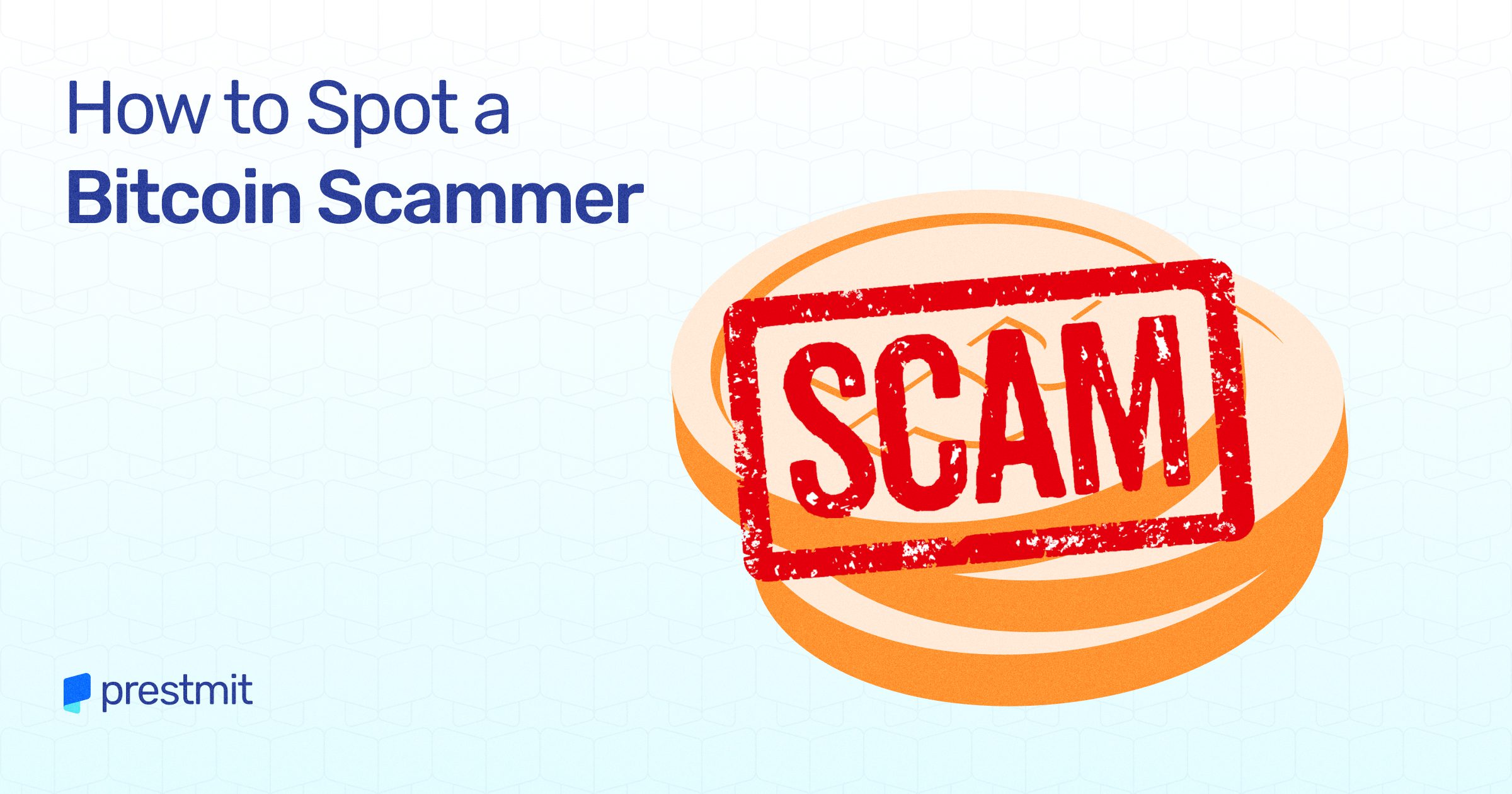Table of Contents
Cryptocurrency scams are not new anymore. People have devised creative ways to steal other people’s crypto. From dusting to phishing and address poisoning, scammers are on the prowl, looking for vulnerable people, especially Bitcoin holders. It takes awareness and intentionality to learn how to spot a Bitcoin scammer.
Bitcoin, the most valuable cryptocurrency, is a magnet for scammers who try various means of stripping owners of their coins. If you own some Bitcoin, you can protect yourself from Bitcoin scams by being prepared for attacks. And the first way to be ready is by knowing how to spot a scammer when they’re on your radar.
In this article, you’ll learn the telltale signs of a Bitcoin scammer, the key red flags and safety tips to avoid becoming their prey.
Common Scams Used by Bitcoin Scammers
1. Dusting Attacks
Crypto dusting attacks involve sending tiny amounts of Bitcoin to several addresses, typically equal to or slightly greater than a transaction fee called dust. They then analyse all the addresses and the transactions in the history, after which they try to trace the owners.
Most dusting attacks are the preceding stage for a phishing attack, especially after they’ve uncovered the identity of the address owners.
You can read more about crypto dusting attacks if you’re unfamiliar with the concept.
2. Phishing
Phishing or a phishing attack in crypto is a fraudulent practice of obtaining vital information through dubious means. It involves extracting personal information like private keys, usernames and passwords from individuals by posing as a trusted person or body.
Bitcoin scammers use phishing scams to steal the private keys of Bitcoin holders and siphon the victim’s coins. They do this via various means. One is by creating fear or a sense of urgency to carry out an action via email.
Usually, these types of emails contain links to fake websites very similar to that of the institution they’re impersonating. If you’re a target and you click the link, you’ll be asked to enter your personal information, such as private keys. If you do, you risk losing all your holdings.
Several other types of phishing attacks include SMS phishing, spear and whaling phishing.
3. Fake Exchanges or Wallets
While this may not be as common as other scams, it’s still a way fraudulent individuals or groups pull the rug from unaware crypto holders. Usually, these fake exchanges are set up as part of an extensive plan. After launching a dusting attack and finding their target, they launch a phishing attack and lure their victims to fake websites as an exchange or wallet.
It’s left for you to know the red flags to look out for to stay safe.
Common Red Flags That Point to a Possible Bitcoin Scam

1. Suspicious Emails with strange Links/URLs
When you receive emails from a supposed exchange or wallet, they might state that your account is in trouble. They’ll also ask you to click a link and provide your private keys. No exchange or wallet will ask you for these bits of information.
2. Unrealistic Promises of Interest or Returns
Whether via email or any other means of communication, you can spot a Bitcoin scammer with this red flag. If they’re offering returns on investment that seem too good to be true, then you should march the brakes and refuse to engage; they’re most likely fraudsters.
3. Demanding Payment in Bitcoin
Besides the usual phishing or crypto dusting attacks, scammers can target and contact you in any way, including dating sites, e-commerce or product sites. A documentary titled “The Tinder Swindler” went viral some years back, showing a bunch of women who were tricked into giving out outrageous sums of money to a swindler in the guise of romantic interests.
Anyone who is not a recognised entity or organisation asking for payment in Bitcoin may be a scammer. Watch out for people like this.
Safety Tips Against Bitcoin Scammers
1. Do Not Click Links in Suspicious Emails.
If you receive an email from a supposed organisation or entity, be it a bank, exchange or wallet, do not click any links or URLs hastily. You can contact your bank or any other financial institution to confirm if they sent you an email. Before you do that, you can check your old emails and see if the tone, email address and branding are exact.
2. Never Share Your Private Keys.
No exchange or wallet will ask you for your private keys or answers to security questions. All this information is only required at the point of login to your account. Never give anyone your private keys, even if they claim your account or wallet is at risk. Always contact the customer support team if you have any concerns.
3. Research Wallets and Exchanges Before Using Them
One of the fundamental lessons every crypto beginner learns is to always do due diligence before taking any action that involves funds or holdings. Take this advice further and research any institution you intend to engage with or use. Look out for ratings and reviews. Check if they’re recognised on Google Play and Apple’s App Store. Even if they’re on these platforms, read reviews on discussion forums like Reddit and Quora.
One valuable way to know if a platform is legit is by joining cryptocurrency communities on social media platforms.
Conclusion
Bitcoin and cryptocurrency scams are more prevalent than ever. If you’re still new to the crypto ecosystem, you may not know how to spot a Bitcoin scammer because they’re becoming very detailed and convincing. However, we’ve discussed some red flags you should look out for in your interaction with people or institutions.
The most important steps to take to avoid falling prey to these scams are to always do your due diligence and join legit crypto communities. That way, you’ll be abreast of the various ways malicious actors launch their attacks.
Last updated on August 13, 2025

